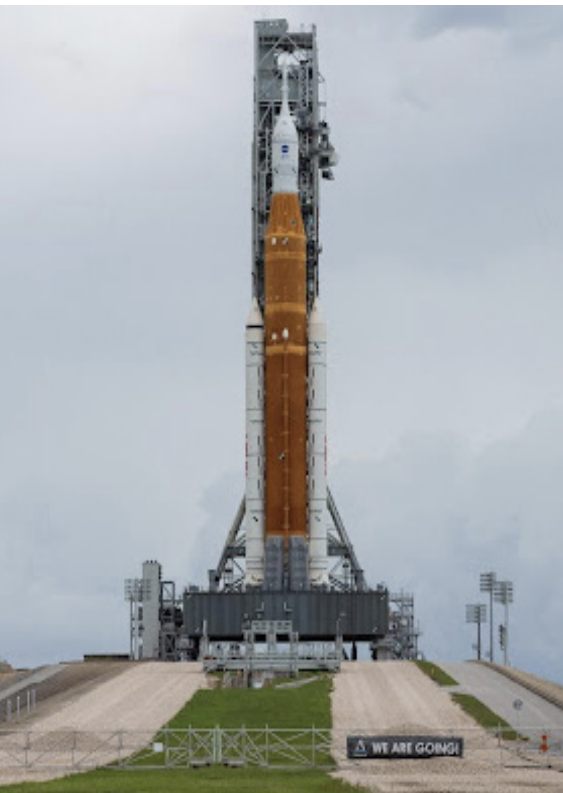NASA’s Return to the Moon Troubled with Issues
Artemis I rocket sitting on launch pad 39B awaiting its attempted launch on September 3, 2022.
September 22, 2022
On September 3, NASA was forced to push back the launch date for their latest project for a second time, the Space Launch System (SLS), due to a hydrogen fuel leak, according to Space News. This comes after engine issues forced NASA to cancel the long-awaited August 29 launch. While it is relatively common for issues to force a launch to delay, these repeated problems with the SLS raises many questions about its development and launch costs, and overall viability. Artemis I, the maiden flight of the SLS marks the first NASA-developed rocket to be flown since the 2009 launch of the now-defunct Ares I-X demonstrator. Artemis I, while unmanned, will be a testbed for future manned lunar missions using the SLS. The main objectives of the mission will be to test NASA’s new Orion Capsule, the SLS booster, and the heat shield which will protect future crews from atmospheric re-entry. The mission will also release cube-sats (mini satellites) in lunar orbit to conduct various scientific experiments.
The amount of time and resources devoted to the development of the SLS is a major criticism of this project. The Planetary Society, an NGO that aims to promote space exploration, has estimated that the SLS has cost around $23.8 billion (not including the development of the Orion Capsule and related infrastructure upgrades) since its inception in 2010. Many blame this cost and the use of outdated hardware on corporate lobbying by large NASA aerospace contractors such as Boeing, Northrop Grumman, and Aerojet Rocketdyne, according to Ars Technica. As the SLS uses much legacy hardware from the Space Shuttle, many see its existence as a way for contractors to keep extending previous existing contracts from the shuttle era.
Artemis I is slated to roll back out for its next launch attempt sometime between September 27 and October 2, according to The Verge. The SLS aims to eventually land humans back on the moon, but with delays and cost overruns, its future is precarious. As soon as Artemis I leaves the launchpad, NASA will focus on Artemis 2, currently scheduled for May 2024. It will perform a crewed flyby of the moon, paving the way for future missions. Artemis 2 is set to be the first time since 2011’s STS-135 launch of the space shuttle that NASA has flown humans on its own rockets.







